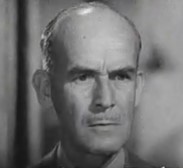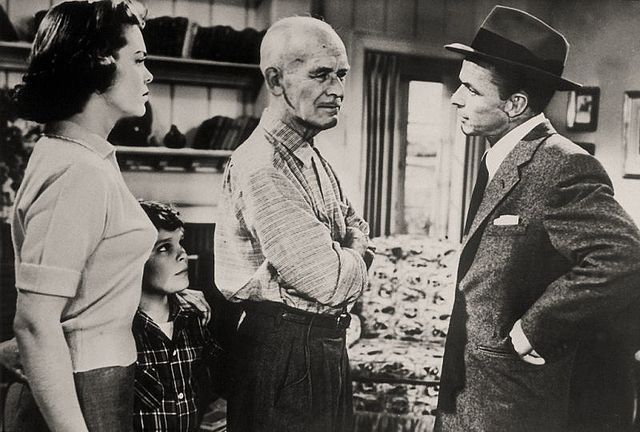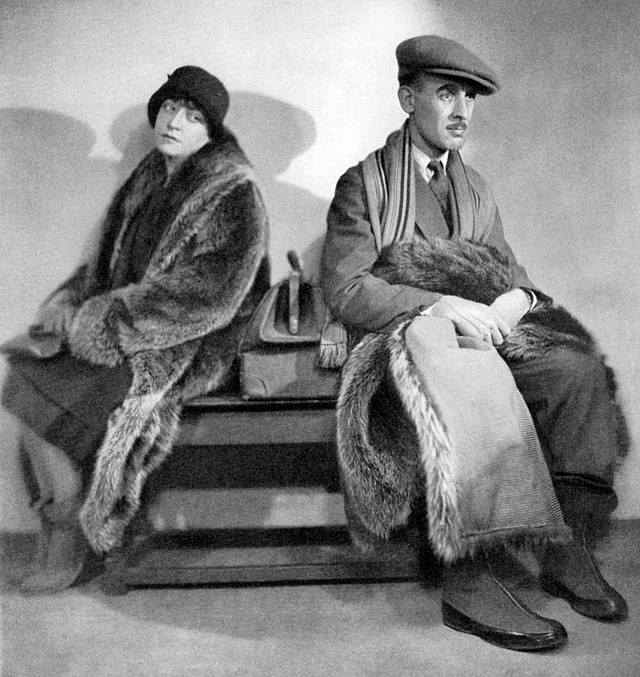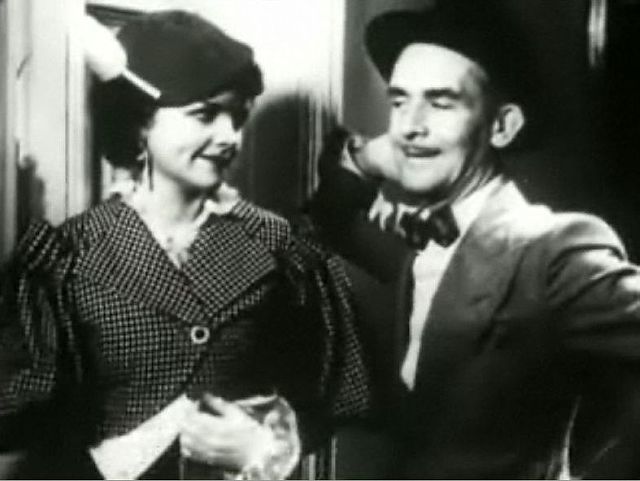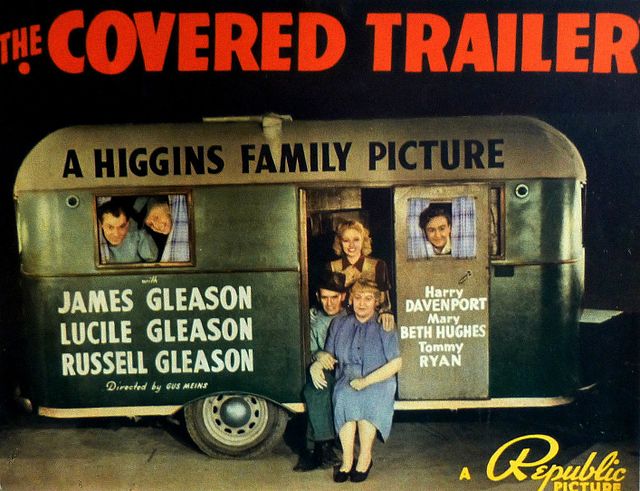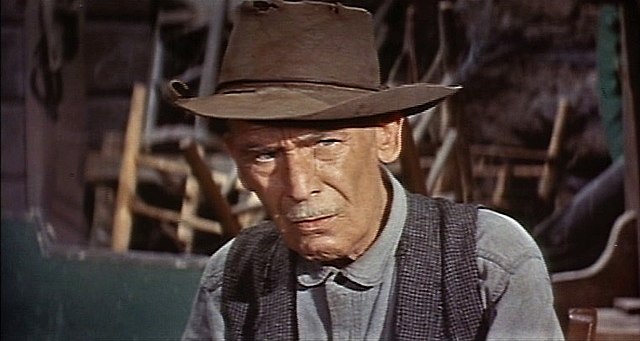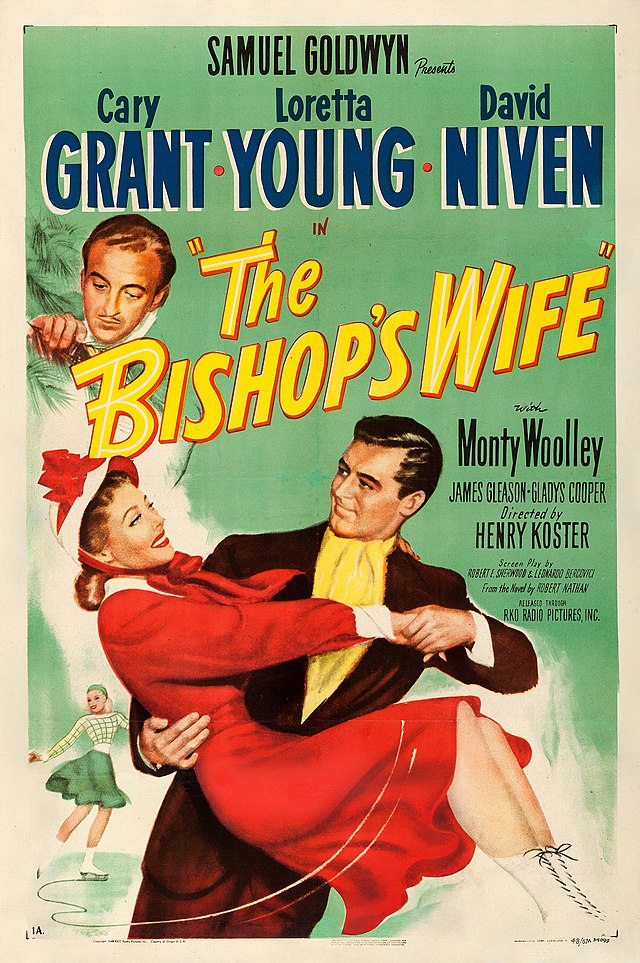James Gleason
back| Full Name | James Austin Gleason |
| Stage Name | James Gleason |
| Born | May 23, 1882 |
| Birthplace | New York City, New York, USA |
| Died | April 12, 1959 (aged 76) |
| Buried | Holy Cross Cemetery, Culver City, California, USA |
| Married to | Lucile Webster Gleason (m. 1905–1947; her death) |
| Children | Russell Gleason |
| Notable films | Here Comes Mr. Jordan (1941) - The Bishop's Wife (1947) - Meet John Doe (1941) - Arsenic and Old Lace (1944) - A Guy Named Joe (1943) |
James Gleason
Hollywood’s Lovable Curmudgeon
James Austin Gleason was born into a theatrical family, and he began his career in vaudeville and on the stage. After serving in the U.S. Army during the Spanish-American War and World War I, he transitioned to films in the 1920s. Known for his gravelly voice, distinctive New York accent, and his portrayal of gruff but lovable characters, Gleason became a prominent supporting actor in Hollywood.
Gleason's acting career spanned several decades, and his body of work includes over 150 film and television appearances. His memorable role as the bumbling but kind-hearted character Max Corkle in Here Comes Mr. Jordan earned him an Oscar nomination, solidifying his reputation as a talented character actor.
Related
James Gleason (1882 – 1959)
Biography and Movie Career
James Austin Gleason was born on May 23, 1882, in New York City into a family steeped in the world of theater. His mother, Mina Crolius Gleason, was an actress, and his father, William Gleason, worked as a theatrical manager. Growing up in this environment, young James was exposed to the stage from an early age, and the allure of performing quickly became part of his life. Although born into modest circumstances, his family's connections to the theater provided a natural path for his future career.
Early Career and Military Service
Before becoming the well-known character actor he is remembered as today, Gleason began his professional life on the stage, performing in vaudeville acts. His career in vaudeville allowed him to develop a reputation for sharp comedic timing and gruff, yet charming, delivery, traits that would later become trademarks of his film persona.
Despite his passion for the theater, Gleason paused his career to serve in the military. He enlisted in the U.S. Army during the Spanish-American War and was later called back into service during World War I. The discipline and experience he gained from military life would influence his no-nonsense attitude in both his acting roles and personal life.
Entry into Film and Rise to Fame
In the early 1920s, James Gleason made the transition from the stage to the burgeoning film industry. His first film roles were small, but his sharp wit, gravelly voice, and New York accent quickly set him apart. He appeared in early silent films but truly hit his stride during the sound era, where his vocal delivery became a significant asset.
Gleason’s on-screen presence was often that of a lovable curmudgeon, playing grizzled but warm-hearted characters. He frequently appeared as policemen, detectives, and working-class figures who had a no-nonsense approach to life but were always quick with a witty remark. One of his key attributes was his ability to portray a world-weary, sarcastic demeanor without losing his character's likability.
His breakthrough came when he co-wrote and acted in the play Is Zat So? in 1925, which was a Broadway hit. The success of the play led to more opportunities in film. Throughout the 1930s and 1940s, Gleason became a fixture in Hollywood, known for his work in comedies and dramas alike. He appeared in several notable films during this period, including Meet John Doe (1941), The Bishop's Wife (1947), and A Guy Named Joe (1943).
One of his most important and beloved roles was in Here Comes Mr. Jordan (1941), where he played the bumbling but kind-hearted character Max Corkle, a performance that earned him an Academy Award nomination for Best Supporting Actor.
Marriage and Family Life
James Gleason married fellow actress Lucile Webster in 1905. The couple shared a deep bond both personally and professionally. Lucile was not only his wife but often his collaborator on stage and screen. Their marriage lasted for over four decades, until Lucile’s death in 1947.
Together, they had one son, Russell Gleason, who followed in his father’s footsteps and became an actor. Unfortunately, Russell’s life was cut short during World War II when he tragically died in 1945 after falling from a hotel window in New York City under circumstances that were ruled accidental but remained the subject of much speculation.
The loss of his son was a deep personal blow for James Gleason, who carried this grief for the rest of his life.
Passions Outside of Acting
Though acting remained his primary passion, Gleason was also known for his work behind the scenes. He co-wrote screenplays and stage plays, showcasing his versatility as a storyteller. His knack for writing, particularly in the comedic genre, helped sustain his career and gave him a multifaceted reputation in Hollywood.
Outside of his work in entertainment, Gleason was known for his straightforward, no-frills approach to life. He wasn’t one to chase celebrity or wealth, and his down-to-earth nature made him popular among his peers in Hollywood. He was also a keen sports fan, particularly enjoying baseball, and maintained strong friendships with many people in the entertainment industry.
Later Years and Decline in Health
As Gleason aged, his health began to decline, but he continued to work steadily in films throughout the 1950s. He appeared in The Last Hurrah (1958), a political drama directed by John Ford, which became one of his final notable roles.
However, by the late 1950s, his asthma worsened, leading to increasing bouts of bronchitis. His respiratory issues eventually took a toll on his ability to work consistently. Gleason's humor and charm remained intact even as his physical health deteriorated, but he stepped away from acting in his final years to focus on his health.
Death and Legacy
On April 12, 1959, James Gleason died at the age of 76 from complications related to asthma and bronchitis in Woodland Hills, California. He was buried at Holy Cross Cemetery in Culver City, California, alongside his beloved wife Lucile.
Gleason's legacy lives on through his extensive filmography, which remains popular among classic film enthusiasts. His unique ability to blend humor and pathos made him one of the most memorable character actors of his time. Today, his work in films like Here Comes Mr. Jordan and Meet John Doe continues to endear him to new generations of viewers, ensuring that his contribution to cinema endures long after his passing.
His career spanned over five decades, and he appeared in more than 150 films, television shows, and plays. Although he was often cast in supporting roles, Gleason's distinctive voice and warm, gruff persona left an indelible mark on American cinema.
James Gleason Video Tribute
Acting Style of James Gleason
James Gleason’s acting style was defined by a distinctive blend of warmth, wit, and a naturalistic delivery that set him apart from other character actors of his era. His gravelly voice, combined with his no-nonsense demeanor and quick wit, made him an actor audiences could immediately connect with.
Naturalism and Realism
Gleason’s performances were often noted for their unforced, everyday quality. Unlike many actors of his time, who sometimes brought a theatrical, larger-than-life quality to their roles, Gleason had an understated realism that made his characters believable. His natural delivery allowed him to inhabit the world of the film without drawing unnecessary attention to himself, making him a favorite in supporting roles. He could easily convey the feeling of an ordinary man caught up in extraordinary circumstances.
Even when portraying more colorful, comedic roles, Gleason retained a grounded quality. His characters felt like people you might encounter in real life: a friendly neighbor, a world-weary cop, or a humorous sidekick.
Gruff but Lovable Persona
One of the hallmarks of Gleason’s style was his ability to play gruff, sometimes cantankerous characters who were ultimately lovable and kind-hearted. He often portrayed policemen, managers, or working-class men with a bit of a rough edge, but his roles were always imbued with an underlying warmth and decency. Gleason mastered the fine balance between being tough and endearing, which allowed audiences to both laugh at his characters' grumbling and root for them.
In films like Here Comes Mr. Jordan (1941), where he played Max Corkle, his mix of gruffness and vulnerability is a perfect example of this. Corkle may be a rough-around-the-edges boxing manager, but he’s deeply loyal and caring, and this softer side shines through as the film progresses. Gleason had a unique ability to make you laugh while simultaneously making you feel empathy for his characters.
Expert Use of Humor
Gleason’s comedic timing was one of his greatest strengths. He had a dry, often sardonic delivery, and his sharp wit added a layer of humor to many of his roles. Unlike slapstick comedians of the time, Gleason’s humor was more verbal and rooted in the irony of his characters’ situations. He didn’t need elaborate gags or physical comedy to be funny—his facial expressions, tone of voice, and timing did the heavy lifting.
He often played characters who were the voice of reason in absurd situations, and his deadpan humor acted as a foil to more eccentric or over-the-top characters. In Arsenic and Old Lace (1944), for example, his portrayal of a bewildered police officer trying to navigate the insane world of the Brewster family shows how Gleason could bring levity to a scene without ever breaking the grounded reality of his character.
Streetwise Charm
Another key feature of Gleason’s style was his streetwise charm. His gravelly New York accent and easygoing demeanor lent authenticity to the various “everyman” roles he played. He often portrayed characters with working-class backgrounds—bartenders, cab drivers, or ordinary citizens—giving these roles a sense of authenticity.
Gleason’s characters were typically not highly educated or refined, but they were always quick-witted and clever. This streetwise aspect of his persona allowed him to play characters who were shrewd observers of life, often outsmarting those around them in subtle ways. His characters might not have been wealthy or powerful, but they had a common sense and insight that made them the true moral or intellectual centers of the story.
Supportive Character Actor
Gleason rarely played the lead, but his ability to elevate the performances of those around him was one of his greatest strengths. As a character actor, he brought depth and personality to his supporting roles, enriching the world of the film. His performances never upstaged the leads, but they made the film better as a whole.
In films like The Bishop’s Wife (1947), where he plays a cab driver who unknowingly offers advice to an angel (Cary Grant), Gleason’s simple, down-to-earth performance adds a layer of sincerity and charm that enhances the fantastical elements of the plot. He wasn’t always the focus, but his characters grounded the film and added emotional depth to the story.
Ability to Transition Between Comedy and Drama
One of Gleason’s most notable talents was his ability to shift seamlessly between comedy and drama, often within the same performance. In dramatic roles, his gruffness could take on a more serious, authoritative tone. He played characters who had seen the tougher side of life, often embodying a world-weary resilience that made his dramatic roles feel lived-in and genuine.
In films like Meet John Doe (1941), Gleason’s dramatic talents shine through in his portrayal of a reporter caught in the middle of a political manipulation scheme. His character’s wit and cynicism serve as both comic relief and a commentary on the darker themes of the film. This balance of humor and drama allowed Gleason to tackle complex roles that required emotional depth without sacrificing his comedic touch.
Subtle Physicality
While Gleason was primarily known for his verbal humor and wit, his physicality on screen also contributed to his effectiveness as an actor. He wasn’t a physically imposing figure, but his gestures, posture, and facial expressions often communicated as much as his dialogue. Whether it was a raised eyebrow, a shrug, or a sly smile, Gleason used his body language to convey his characters’ thoughts and emotions in subtle, effective ways.
This subtle physicality was especially apparent in his comic roles, where a well-timed glance or gesture could deliver the punchline without needing any additional dialogue. It’s a testament to Gleason’s skill that he could generate laughs or convey emotion with such minimal, understated movement.
Film Lines and Personal Quotes
From His Films:
"Here Comes Mr. Jordan" (1941)
Character: Max Corkle (talking about his boxer friend, Joe Pendleton, who he believes has come back from the dead):
"I'm still trying to figure out how a guy can look like somebody else and still be himself. But I'll go along with it, Joe, for now, anyway."
Context: This line reflects Gleason’s signature blend of confusion and loyalty as Max Corkle comes to terms with the fantastical premise of the movie. It perfectly captures his ability to deliver lines with both humor and sincerity.
"Arsenic and Old Lace" (1944)
Character: Officer Brophy (commenting on the strange happenings at the Brewster home):
"This house is crazy, that's what's the matter with it. There's one—two—three dead bodies buried in the cellar, you think that's normal?"
Context: Gleason’s portrayal of the bewildered officer brought a great deal of humor to the dark comedy, with his no-nonsense delivery of absurd situations adding to the film's charm.
"The Bishop's Wife" (1947)
Character: Sylvester the Taxi Driver (giving advice to Cary Grant’s angel character):
"Well, I’ve always said, if you want to get anywhere in life, you gotta have a destination. That's what the good Lord gave us streets for, ain't it?"
Context: In this holiday classic, Gleason’s down-to-earth character unknowingly offers advice to an angel, showcasing his ability to blend humor with deeper wisdom, all delivered with his usual dry, straightforward charm.
Off-Screen Quotes and Anecdotes:
On His Approach to Acting:
"I always figured if I could make them believe me, I was halfway there. I’m just the same as I am at home—except I say other people's words."
Context: Gleason's naturalistic acting style often left audiences feeling as though they were seeing the real man on screen. This quote reflects his no-nonsense approach to acting, relying on authenticity and relatability.
On Comedy:
"Comedy’s like a knock on the door—you don't want it to come in and sit down. You want it quick, sharp, and to the point."
Context: Gleason’s timing and delivery were essential to his comedic success. This quote emphasizes his belief in keeping humor sharp and efficient, much like his quick-witted characters.
On Writing and Hollywood:
"Writing's like laying bricks, one word after the other. Acting's like painting the house, you're working with what's already there."
Context: Gleason, who also wrote and co-wrote plays and screenplays, understood the differences between writing and acting, appreciating the craftsmanship involved in both. This quote shows his pragmatic view of the creative process.
From Public Appearances and Interviews:
On His Career Longevity:
"They tell me I’ve been around forever. Well, I guess I’m just too stubborn to leave."
Context: In later years, Gleason was often asked about his long-lasting career in Hollywood. This humorous response captures his humble and self-effacing nature, while also reflecting the gritty persistence that kept him working well into his 70s.
What Others said about James Gleason
Frank Capra (Director of Meet John Doe)
Sentiment: Capra admired Gleason’s ability to bring depth and warmth to his characters. He often praised Gleason’s sharp wit and the ease with which he could shift between comedy and drama. In Meet John Doe, Gleason’s portrayal of the cynical reporter was a key part of the film’s success.
- Quote (paraphrased): "Gleason had the ability to make every line he delivered seem like it was something he had just thought of at that moment. That spontaneity is rare and precious."
- Context: Capra admired Gleason's realism and natural delivery, which fit perfectly with the everyday, relatable characters that Capra often used in his films.
Cary Grant (Co-star in The Bishop’s Wife)
- Sentiment: Grant, who starred alongside Gleason in The Bishop’s Wife (1947), once referred to him as one of the “most genuine” actors he had ever worked with. Grant appreciated the humor and heart that Gleason brought to the role of Sylvester, the taxi driver, noting that Gleason’s simple yet profound performance gave the film an extra touch of warmth.
- Quote (paraphrased): "James had this effortless ability to make you feel like his character was a friend you’d known for years. That’s not something you can learn; it’s just who he was."
Jean Arthur (Co-star in Meet John Doe)
- Sentiment: Jean Arthur, who worked with Gleason on Meet John Doe (1941), spoke highly of his professionalism and his knack for adding humor to dramatic scenes. She admired his ability to lighten the mood on set, even when working on a film with serious undertones.
- Quote (paraphrased): "Jimmy was always quick with a joke, but even quicker with a kind word. He made everyone feel at ease, both on-screen and off."
- Context: Arthur's appreciation of Gleason’s humor and warmth reflects the respect many actors had for his positive influence on set.
Michael Curtiz (Director of The Bishop’s Wife)
- Sentiment: Curtiz, the director of The Bishop’s Wife, valued Gleason's ability to portray everyday characters with sincerity. He saw Gleason as an actor who could bring a necessary layer of authenticity to any film, no matter how fantastical or sentimental the story was.
- Quote (paraphrased): "He had the ability to ground a scene, to make you believe in the moment no matter how whimsical the script."
- Context: Curtiz appreciated how Gleason’s performances brought believability and charm to the angelic, almost fairy-tale-like film.
Critics' Praise
- Sentiment: Critics frequently praised Gleason for his work as a supporting actor, often describing him as a “scene-stealer.” They admired his ability to elevate films with his natural delivery and quick-witted humor. His performances, particularly in Here Comes Mr. Jordan and Meet John Doe, received widespread critical acclaim for adding emotional depth and humor to these films.
- Quotes:
- "Gleason’s portrayal of Max Corkle in Here Comes Mr. Jordan is a masterclass in how to steal a scene without overshadowing it." — The New York Times.
- "James Gleason’s performances are never about grandstanding. They’re about subtlety and truth, and that’s why they resonate long after the film is over." — The Los Angeles Times.
Contemporary Actors and Fellow Character Actors
- Sentiment: Gleason was a role model for other character actors in Hollywood. His peers appreciated how he embraced his roles, no matter the size, with a professionalism that set a high standard. He was known for his humility, often downplaying his significant contributions to the success of the films he appeared in.
- Quote (paraphrased): "Jimmy made it look easy. He didn’t chase the spotlight, but whenever he was on screen, you couldn’t help but watch him. That’s the kind of actor we all wanted to be." — A fellow character actor from the Golden Age of Hollywood.
Industry Professionals
- Sentiment: Producers, screenwriters, and directors often spoke of Gleason as a reliable and talented professional who could always be counted on to deliver a solid performance. He was someone who could take a role, no matter how small, and add his unique touch of realism and humor to it.
- Quote (paraphrased): "If you gave James a character, he wouldn’t just play it; he’d embody it. You always knew you were in good hands when he was part of your cast."
- Context: This praise reflects Gleason’s work ethic and his ability to bring authenticity to even the most minor roles, making him one of Hollywood’s most valued character actors.
General Sentiments:
- A Friend to All: James Gleason was known for his friendly, approachable demeanor. His gruff on-screen persona was often softened by his genuine kindness off-screen. Co-stars and directors frequently commented on how easy and enjoyable it was to work with him. He was not interested in the fame or accolades as much as in delivering solid work and contributing to the ensemble.
- An Actor’s Actor: Though he wasn’t a leading man, Gleason was highly respected by his peers, especially other character actors who looked up to his consistency and dedication. His colleagues valued his professionalism, describing him as an actor who always knew how to find the heart of a character, no matter how brief the role.
Awards and Recognition
James Gleason, despite being primarily known as a character actor rather than a leading man, received significant recognition throughout his career for his consistent and memorable performances. Below is a comprehensive overview of the awards and recognition he received:
Academy Award Nomination (1942)
- Category: Best Supporting Actor
- Film: Here Comes Mr. Jordan (1941)
- Role: Max Corkle
- Description: Gleason received his only Academy Award nomination for his role as Max Corkle, a bumbling but kind-hearted boxing manager. The film, a fantasy-comedy about a boxer who dies before his time and is given a second chance at life, became a critical and commercial success. Gleason's performance as the comic foil and emotional center of the film was widely praised for its humor, warmth, and relatability.
Stage Success and Recognition (1920s)
- Notable Play: Is Zat So? (1925)
- Role: Playwright and Actor
- Description: While not a film award, Gleason’s work on the stage was also notable. He co-wrote and starred in the hit Broadway play Is Zat So?, which ran for 634 performances between 1925 and 1926. The play's success helped launch his career in Hollywood, and he was recognized for his sharp comedic writing and naturalistic acting. The play was later adapted into a silent film in 1927, further solidifying his reputation.
Golden Era of Hollywood Recognition
- Hollywood Walk of Fame: James Gleason was honored with a star on the Hollywood Walk of Fame for his contributions to the film industry.
- Star Location: His star is located at 7038 Hollywood Boulevard in Los Angeles, California.
- Description: This honor recognizes Gleason’s immense contribution to the Golden Age of Hollywood as a versatile and dependable supporting actor. His star on the Hollywood Walk of Fame serves as a lasting testament to his impact on the film industry.
Critical Acclaim
- Throughout his career, Gleason was consistently praised by critics for his memorable performances, particularly in supporting roles. He became known as a “scene-stealer” due to his ability to elevate the material and add depth to the films he appeared in. He was especially celebrated for:
- His work in comedies, such as The Bishop’s Wife (1947), where his natural delivery added charm to his small but pivotal role.
- His dramatic roles, such as Meet John Doe (1941), where his portrayal of a wisecracking, cynical reporter balanced humor with the film’s deeper themes.
Industry Respect
- Gleason was highly respected by his peers in Hollywood, not just for his acting but also for his work as a writer and director. He was known for his professionalism, versatility, and the easygoing, down-to-earth quality he brought to his roles, making him a favorite among directors and actors alike.
- His collaboration with renowned directors like Frank Capra (Meet John Doe), Michael Curtiz (The Bishop’s Wife), and others cemented his reputation as one of the most reliable character actors of the time.
Legacy
- Posthumous Recognition: While Gleason didn’t receive many formal awards during his lifetime, his enduring legacy in American cinema has been kept alive by classic film enthusiasts. His work in Here Comes Mr. Jordan, Arsenic and Old Lace, The Bishop’s Wife, and other films continues to be praised by modern critics and viewers.
- Film Festivals and Screenings: Many of his films are still showcased in classic film festivals and retrospective screenings, where his performances are celebrated as examples of character acting at its finest.
Movies with James Gleason
1920s
1922 – Polly of the Follies
- Synopsis: A silent comedy about a small-town girl, Polly, who dreams of becoming a star in the Ziegfeld Follies. Gleason played a supporting role in this early silent feature.
1928 – The Shady Lady
- Synopsis: This comedy-drama involves a singer who pretends to be a high-society woman in order to woo a millionaire. Gleason had a supporting role in this silent-era film.
1930s
1931 – The Broadway Melody of 1936
- Synopsis: A musical comedy that follows an aspiring Broadway actress trying to land a role in a show produced by her childhood sweetheart. Gleason plays the wisecracking assistant, adding comic relief.
1932 – The Penguin Pool Murder
- Synopsis: A detective mystery set in a zoo's penguin pool, where a murder occurs. Gleason plays a police detective in this witty, engaging murder mystery.
1933 – Gold Diggers of 1933
- Synopsis: This musical comedy about a group of Broadway performers features Gleason in a minor but important role as one of the show’s backers. The film is known for its opulent musical numbers.
1934 – The Firebird
- Synopsis: A romantic mystery set in Vienna, where a famous actress is murdered and everyone in her circle becomes a suspect. Gleason plays the investigating detective in this crime drama.
1935 – The Irish in Us
- Synopsis: A comedy about a family of Irish-American brothers with different ambitions. Gleason portrays the oldest brother, a policeman, who has to mediate between his boxer brother and their mother.
1936 – Meet Nero Wolfe
- Synopsis: Based on Rex Stout’s famous detective series, Gleason plays the clever and eccentric detective Nero Wolfe's assistant in this mystery thriller.
1937 – The Great Garrick
- Synopsis: A period comedy-drama about a famous actor who is tricked into believing his performances are not as good as he thinks. Gleason plays a secondary role as part of the comic ensemble.
1939 – The Cowboy and the Lady
- Synopsis: A romantic comedy where a wealthy woman falls for a cowboy. Gleason plays the cowboy’s father, adding a charming touch of humor and warmth to the film.
1940s
1940 – The Westerner
- Synopsis: A Western about a cowboy who becomes friends with a judge who hates cattle rustlers. Gleason appears as the town drunk who becomes embroiled in the central conflict.
1941 – Here Comes Mr. Jordan
- Synopsis: In this fantasy-comedy, a boxer dies before his time and is given a second chance at life by an angel. Gleason plays Max Corkle, the boxer's bumbling but loyal manager, a role that earned him an Academy Award nomination for Best Supporting Actor.
1941 – Meet John Doe
- Synopsis: A political drama about a man who pretends to be a symbol for the common man. Gleason plays a reporter who helps uncover the truth. The film was directed by Frank Capra and has strong political themes.
1942 – The Mayor of 44th Street
- Synopsis: A drama about a former gangster who turns his life around by managing a nightclub. Gleason plays a key supporting role as one of the nightclub’s backers.
1943 – A Guy Named Joe
- Synopsis: A wartime fantasy where a pilot, after dying in combat, becomes a guardian angel for another pilot. Gleason plays a key supporting role as a mechanic who helps the lead characters.
1944 – Arsenic and Old Lace
- Synopsis: A dark comedy about two elderly aunts who murder lonely old men out of mercy. Gleason plays the police officer investigating the bizarre happenings in the family home. This Frank Capra-directed film remains a beloved classic.
1946 – Three Wise Fools
- Synopsis: A comedy about three elderly men who become the guardians of a young girl. Gleason plays one of the elderly guardians, adding his trademark gruff warmth to the role.
1947 – The Bishop’s Wife
- Synopsis: A Christmas-themed film about a bishop who prays for divine intervention, which arrives in the form of an angel (played by Cary Grant). Gleason appears as a friendly cab driver who unknowingly gives advice to the angel and the bishop.
1950s
1950 – Key to the City
- Synopsis: A romantic comedy where two mayors meet and fall in love during a convention. Gleason plays the best friend and confidant of one of the mayors, delivering comic relief.
1953 – Trouble Along the Way
- Synopsis: A drama about a down-and-out football coach trying to rebuild his life while raising his daughter. Gleason plays an old friend who helps the coach turn his life around.
1958 – The Last Hurrah
- Synopsis: A political drama about an aging mayor (played by Spencer Tracy) making one last run for re-election. Gleason plays a supporting role as one of the mayor’s trusted friends and advisors. This was one of his final prominent film roles.

